Hellboy: Krampusnacht, Assassinistas, Tales of Suspense & More in Required Reading: Comics for 12/20/2017
Main Art by Adam Hughes Comics Lists Required Reading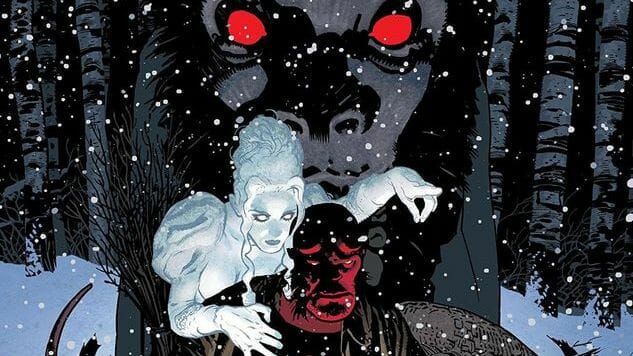
Ho ho ho—it’s the final New Comic Book Day before Santa’s arrival (or just the second-to-last of Wednesday of 2017, depending on your personal celebrations). This hellish grab-bag of a year sees itself out with a bevy of new launches: Tini Howard and Gilbert Hernandez expand the Black Crown umbrella, Ed Piskor gives the X-Men the Ken Burns treatment, Valiant’s resident cape comedians return in a new Quantum & Woody title, Steve Niles resurrects 30 Days of Night with Piotr Kowalski, and Marvel debuts two new retro-titled series. We’ve also got the second volume of one of our favorite titles of the year, just in time for holiday gift-giving, as well as a grindhouse collection you should only give to someone with a high tolerance for the lo-brow. All of this and more (Krampus!!) comprise your Required Reading for December 20th, 2017.
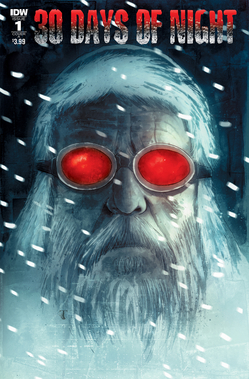 30 Days of Night #1
30 Days of Night #1
Writer: Steve Niles
Artist: Piotr Kowalski
Publisher: IDW Publishing
Fresh off of Winnebago Graveyard, his best-received original horror story in years, Steve Niles is returning to the source of his success in the most literal way possible: rebooting his breakout 30 Days of Night with original series illustrator Ben Templesmith on covers and prolific Sex artist Piotr Kowalski on interiors. As odd as it may seem for Niles to reimagine his own property, which spawned two film adaptations and dozens of spin-off issues, publisher IDW is comparing the move to the Fargo television series, which took the Coen Bros. classic as tonal inspiration while charting exciting new territory. Templesmith’s gaunt, murky art was a key part of the original’s success, which makes Kowalski a fascinating choice: despite displaying grotesquery chops on books like Terminal Hero, he has a more precise style than Templesmith or alternate-cover artist Ashley Wood. It’s been 15 years since we first experienced 30 days of darkness in Barrow, Alaska—this Wednesday will prove if the wait has been long enough for a return visit. Steve Foxe
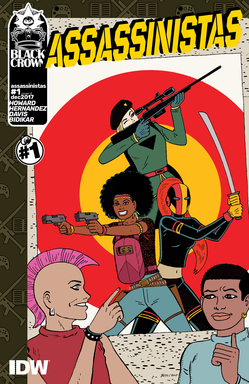 Assassinistas #1
Assassinistas #1
Writer: Tini Howard
Artist: Gilbert Hernandez
Publisher: Black Crown/ IDW Publishing
An early blurb for Tini Howard and Gilbert Hernandez’ Assassinistas called it Kill Bill as directed by Wes Anderson, and it’s hard to top that assessment, except to say that it’s a bit gayer than that. College student Dominic Prince experiences the all-too-familiar struggle of having to take a semester off when his mother Octavia can’t afford tuition—except Octavia can’t make the deposit because she needs the cash to finance one last bounty-hunter gig. Dominic, pink-mohawk-sporting boyfriend in tow, decides to spend the semester working the family business alongside dear old mom rather than slinging coffee on the quad. Former Vertigo editor Shelly Bond’s Black Crown imprint kicked off with Kid Lobotomy, written by Vertigo old guard Peter Milligan and illustrated by Tess Fowler, so it makes sense that Bond flipped the script here, pairing rising star (and former Paste contributor) Howard with living legend Gilbert Hernandez, whose iconic retro style elevates Assassinistas to one of the year’s final must-read titles. Steve Foxe
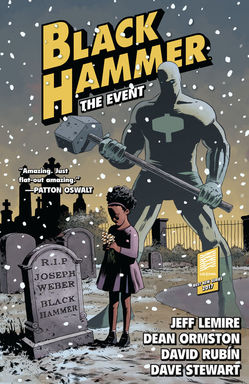 Black Hammer Vol. 2: The Event
Black Hammer Vol. 2: The Event
Writer: Jeff Lemire
Artists: Dean Ormston, David Rubín
Publisher: Dark Horse Comics
The best comic book currently published at Dark Horse—and one of the best modern comics, period; sees its second story arc collected in this new volume. Jeff Lemire, Dean Ormston, David Rubín and Dave Stewart’s story of a classic superhero team mysteriously marooned in a rural town has only deepened, both emotional realism and creepy plot progressions, as its issues have stacked, unfurling a grand vision with a decades-spanning scope. Whereas the initial arc showed readers who these characters are, these stories answer why they are: what disillusioned Golden Gail into an alcohol-fueled depression? How did the alien automaton Talky-Walky join the earth-bound team? And, most importantly, who was Black Hammer and what’s his daughter doing with these people on a farm divorced from reality? Primary artist Ormston tackles the present issues with Twilight Zone unease while Rubín’s clean lines grace two classic-sci-fi-themed flashback issues. The series is currently detouring into two miniseries before addressing this collection’s eye-watering cliffhanger, but at this juncture, there’s no such thing as too much Black Hammer. Sean Edgar
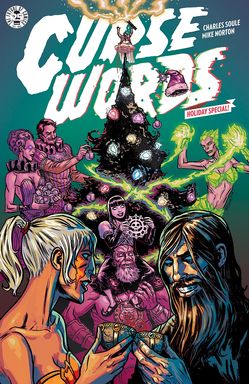 Curse Words: Holiday Special
Curse Words: Holiday Special
Writer: Charles Soule
Artist: Mike Norton
Publisher: Image Comics
Curse Words is the closest we’ll get to the absurd, frighteningly creative apex set by Monty Python roughly 40 years ago—grand fantasy that refuses to take itself seriously. This Holiday Special invites guest artist Mike Norton of Battlepug fame to Charles Soule and Ryan Browne’s offbeat comic, an appropriate addition as the comic revolves around one f*@%$!-ed-up looking pug. The story follows a group of sociopathic wizards and a sadistic ritual that serves as their winter holiday: the Meatmeat. In this event, one spellcaster reincarnates a bag full of miscellaneous body parts and tissue into a disturbing, multi-limbed atrocity—the aforementioned pug, as conceived by Cronenberg and a classroom full of rabid toddlers. Nine wizards then hunt and eat the creature, the winning hunter netting a grand prize courtesy master mage Sizzajee. This special adds flavor to the characters and events that occupy the preceding 10 issues, Wizord included, but stands as a goofy, imaginative experience all its own. For those unfamiliar, seeing the world that Soule and co-creator Browne have concocted is an invitation to dive further into their inane grimoire of idiotic, warring spellslingers. Sean Edgar
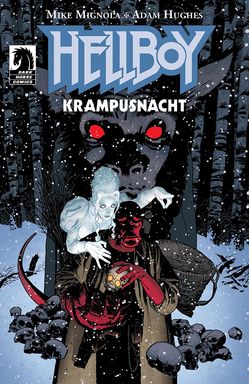 Hellboy: Krampusnacht
Hellboy: Krampusnacht
Writer: Mike Mignola
Artist: Adam Hughes
Publisher: Dark Horse Comics
Comics written solely by Mike Mignola are a rarity since the iconic cartoonist wrapped Hellboy in Hell a year and a half ago, and any script sculpted exclusively by his hands is cause for celebration. Hellboy: Krampusnacht not only features the terse, gothic economy of Mignola’s narrative, but lush (and equally rare) interior pencils from Adam Hughes, an artist known for his detailed covers and recent Betty and Veronica miniseries. Just in time for Christmas, this one-shot pits the big, red paranormal investigator against the holiday’s popular folkloric monster, the European anti-Klaus who kidnaps all the boys and girls left off St. Nick’s list. As opposed to Mignola’s carved, elegant illustrations, Hughes’ approach has a more traditional comic-book bombast that nicely captures the thunderous brawl between the two demons. Mignola also sneaks in some truly unsettling plot beats, including a Kubrick-quality haunted-house scene and left-hook denouement. Dickens may have cornered the market on December scary stories, but this comic—in combination with myriad other holiday Hellboy shorts— further confirms Mignola as his own modern master of yuletide scares. Sean Edgar
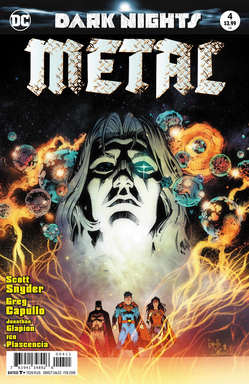 Metal #4
Metal #4
Writer: Scott Snyder
Artist: Greg Capullo
Publisher: DC Comics
For a certain breed of DC fan, seeing The Sandman’s Daniel on the cover of Scott Snyder and Greg Capullo’s Metal #4 inspires more dread than excitement. Early Vertigo titles have a very specific tone, one matched in the last decade-plus only by Gerard Way’s Young Animal imprint. Neil Gaiman’s massively influential dark fantasy certainly doesn’t scream “crossover mega-event,” but if DC has made anything clear this year, it’s that the publisher considers all of its toys (Watchmen, Tom Strong) to be in play. Snyder and Capullo have thus far delivered on their promise of an over-the-top love letter to the DCU, weaving together multiverse lore, magic metal and, most importantly, a crap-ton of evil Batmen. If you have any reservations about this action-figure clash, now’s the time to throw up some devil horns and just embrace it. Steve Foxe
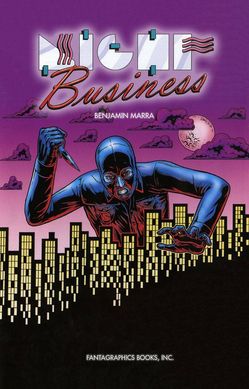 Night Business
Night Business
Writer/Artist: Benjamin Marra
Publisher: Fantagraphics
Benjamin Marra is one of indie comics’ most distinct stylists: a ‘70s/‘80s grindhouse omnivore with an equally passionate devotion to the hyper-masculine posturing of ‘90s extreme comics. The Canadian auteur filtered all of those well-liquor flavors into heady, postmodern wonders including Terror Assaulter and American Blood, and his latest work only falls deeper into its grainy rabbit hole. Night Business reprints Marra’s early self-published issues and ends the trash epic with brand-new stories, capturing the complete saga in this graphic novel. The urban descent follows one man (Johnny Timothy, which is an amazing name) as he attempts to track a serial killer slaughtering strippers in an underworld that falls subterranean depths below “seedy.” This is the best drive-thru cult gem that never was, delivering the sordid lo-fi beats of its era while aiming a mirror at the bizarre art that seeped around its edges. Sean Edgar
 Quantum & Woody #1
Quantum & Woody #1
Writer: Daniel Kibblesmith
Artist: Kano
Publisher: Valiant Entertainment
Cape-comedy duo Quantum and Woody have had a surprisingly good go of things since Valiant rebooted its line half a decade ago: despite initial fears that the spark of Christopher Priest and M.D. Bright’s original series couldn’t be replicated, the initial team of James Asmus, Tom Fowler, Ming Doyle and others captured the balance of fraternal drama and (often goat-related) humor. Valiant further calmed fears by enlisting Priest and Bright to continue their original series, and now comedy writer and rising comic scribe Daniel Kibblesmith (author of Santa’s Husband) and artist Kano are kick-starting a new volume for the super-powered adopted brothers. Kano actually contributed to the previous volume, and his clean-lined style and emotive acting is a perfect fit for the comedy/action balance struck by Kibblesmith’s script. Steve Foxe
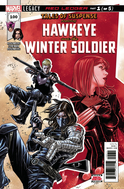
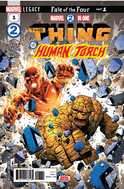 Tales of Suspense #100/ Marvel Two-in-One #1
Tales of Suspense #100/ Marvel Two-in-One #1
Writer: Matthew Rosenberg/ Chip Zdarksy
Artist: Travel Foreman/ Jim Cheung
Publisher: Marvel Comics
Marvel’s Legacy initiative rolls onward this week with two series named for older anthology titles: Matthew Rosenberg and Travel Foreman’s Tales of Suspense and Chip Zdarsky and Jim Cheung’s Marvel Two-in-One. The former, which the solicitation text amusingly labels “#100 (of 5)” due to its numbering scheme, finds the Winter Soldier and Hawkeye investigating mysterious assassinations in the wake of Black Widow’s apparent death during Secret Empire. (And given Natasha’s stature in the Marvel Universe and its cinematic equivalent, “apparent” seems a key word.) Two-in-One cheekily leans into its title by spotlighting half of Marvel’s beloved Fantastic Four, separated into other team books since the line-wide Secret Wars event, and still isolated from Reed, Sue and the kids. Zdarsky perpetually walks the fine line between pathos and gonzo humor, and Cheung is Marvel’s finest shorthand for telling readers that a book “matters.” Rosenberg, meanwhile, has graduated from “rising star” status to become one of the publisher’s premiere newer voices, paired here with a chameleon of an artistic talent who is as adept at horror (Animal Man) and kung-fu action (Immortal Iron Fist) as he is at cosmic melodrama (Ultimates 2). The titles of these books might feel a bit retro, but the creative teams and premises jump both to the top of the Legacy pile. Steve Foxe
 X-Men Grand Design #1
X-Men Grand Design #1
Writer/Artist: Ed Piskor
Publisher: Marvel Comics
Ed Piskor is as much an obsessive historian as a celebrated cartoonist, as seen in his breakout (and breakbeat) opus, Hip Hop Family Tree. From the mind of a man who only goes to concerts if he knows every lyric to every song, the oversized graphic novels narrate an entire music genre with period-inspired art and exhaustive research. In X-Men Grand Design, Piskor flexes his biographical smarts in a two-part project that streamlines decades of Marvel’s most interesting property (sorry Avengers). Starting with Jack Kirby and Stan Lee’s origins through Chris Claremont’s sprawling run, this comic condenses the biggest events in the merry mutants’ chronology into a digestible volume devoid of ret-conned confusion. Ever wonder how Professor Xavier (definitively) lost the use of his legs, or what Magento’s wife was up to before she was an anthropomorphic cow? The work also serves as a distilled look at the era when the comic began and the authors’ inspirations: WWII veterans Lee and Kirby channel the atrocities of the Nazis through anti-mutant bigotry and nuclear science’s impact looms large. Piskor answers those questions, but this volume also works as an engaging piece on its own terms, buoyed by the same expressive, Ben-Day-dot art of the period. Also: pictures of a youthful Piskor playing the infuriating NES X-Men game as a kid. Sean Edgar